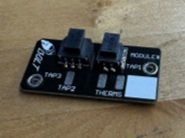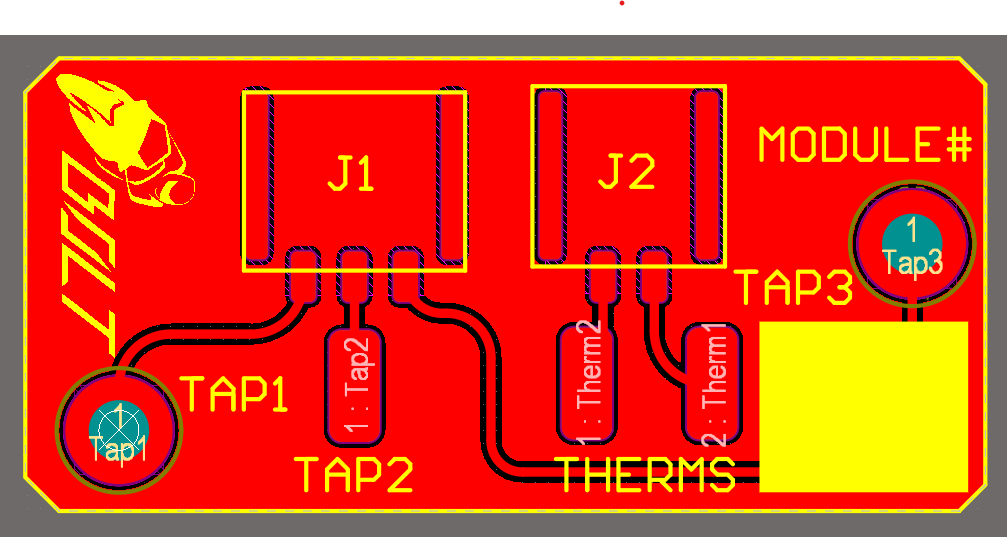BOLT at Virginia Tech
Integration lead for the the electric superbike race team at VT. Oversee interdisciplinary projects across chassis, powertrain, and controls sub teams.
Bike is engineered to meet the performance of a Yamaha R1M, their top spec race bike. Bikes are roughly 600V 160kW. More specs available at vtbolt.com
Detailed personal projects below:
Module Design
Was personally involved in the design, manufacture, and testing of 3 generations of battery modules.
1) Laminated busbar
Designed to have all wire bonds on the top face of the module, utilizing shoulder bonds
Original plan was to use special order large thickness PCBs
Cost exceeded $7k. I wanted to find a way to do it in house.
Determined AL1100 has the ideal tradeoff between machinability, bond strength, resistivity, and weight
Tested 4 glues and 5 insulators (20 total options) for bond strength and machinability
After successful R&D process, it was determined that shoulder bonds were not repeatable, leading to next version
2) Top and bottom wire bonds
After determining shoulder bonds would not work, needed to pivot asap
Redesigned and manufactured new modules within 1 week
Met all design requirements, successfully pulled over 300A from a module
During dynamometer testing it was found bonds failed during vibration, leading to next version
3) Soldered and spot welded
The priority was now to make something mechanically robust
The team had had success with spot welds in the past, but nickel strip could not handle the new higher current
Decided to use copper strip for its ampacity, needed to find a way to connect it to the cells and busbars
Used aluminum solder to solder the copper to the aluminum
Spot welded copper to cells, used 2 small nickel rectangles as resistors to increase bond strength
Copper rips before the bonds or solder joints break
Currently used in race bike with no known issues
Cell Testbench
Designed and built test bench to test battery cells for electric motorcycle
Draws 250A at 4V (full throttle equivalent)
Includes Arduino with data collection including voltage, current, temp at different locations
Wrote Matlab data analysis program
Was able to test cells against the datasheet claims
Was used to inform battery selection for motorcycle, currently testing future cells
Started with a simple prototype
Module Testbench
Designed to validate each 5P group within a module
Draws 250A burst from module, measures voltage drop of each group
Assumption is that if a module is less than 5P (connection failure), it will sag significantly more
Successfully caught 100% of modules with manufacturing errors
Resistor bank was cost prohibitive, made a custom resistor using steel
Calculated resistor performance, final result was within 20% at ambient temp, tested using 4 wire kelvin test
Did not account for resistance change with temperature appropriately, combined with voltage sag this created current sag
Module PCB
Module Interface PCB
Current modules are difficult to assemble with voltage tap and thermistor harnesses
Interfaces rely on small bolted joints and ring terminals, prone to vibration failure
Designed a new PCB that would permanently attach to the modules
Uses connector interfaces for voltage taps and thermistors
Designed in Altium/Solidworks co-designer



















